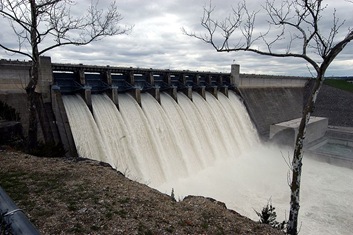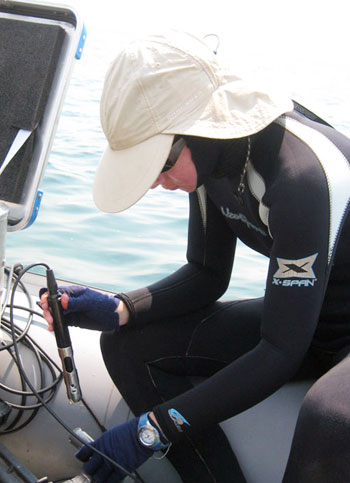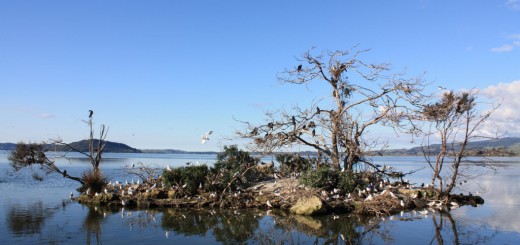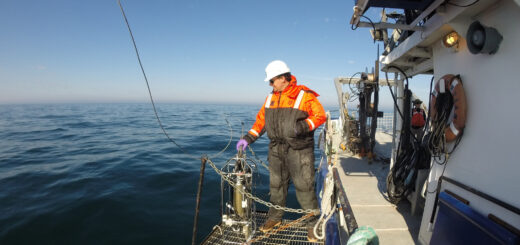Low DO in Lake Taneycomo has become a high priority
1
Table Rock Dam during an April 2008 White River flood
Dissolved oxygen levels in water poured from Missouri’s Table Rock Dam into Lake Taneycomo have been an immense concern to both the general public and state conservation officials. The quality of water running through dam turbines is creating lake conditions inhospitable to local aquatic species, including a large population of trout.
This is especially troubling to locals because of the potential economic effects on the region. A Missouri Department of Conservation report published in 2004 estimated that the downstream trout fishery on the lake contributes $15 million annually to the local economy.
Six parts per million of dissolved oxygen is what fish need to thrive, according to MDC fisheries biologist Shane Bush. Below that, “The fish don’t eat,” he said. “It affects how quick they grow and they really get lethargic. Fish that are hooked won’t fight well, and if they’re released they’re usually exhausted to the point they might not recover. They often die.”
Historically, the dam has been prone to low dissolved oxygen levels in the late summer and fall, prompting its identification as an “impaired waterway” in 2008.
The inflow of water lacks DO content because Lake Taneycomo is filled with water from the bottom of Table Rock Lake that spills over Table Rock Dam. As with all water that is deep within a water column, it has a lower oxygen content and temperature than water closer to the surface. Though the cooler temperature is naturally beneficial to the trout, water poured over the dam has trouble mixing with the oxygenated and warmer surface water already in Lake Taneycomo.
The Environmental Protection Agency has instructed the state of Missouri to propose and work toward a viable solution. As a response, the Missouri Department of Natural Resources is first requesting input from the public. Proposed solutions to the low oxygen problem are outlined by the Missouri News-Leader:
Inject tons of pure liquid oxygen into the deep, oxygen-deprived water behind Table Rock Dam before the water flows through the turbines.
House turbines
Replace two “house” turbines that generate power for the dam with newer designs that more efficiently mix air into the water.
Primary turbines
Replace the four 50-year-old primary power generating turbines with newer designs that efficiently add air to the water.
Reduce bacteria
More effectively control wastewater and septic tank systems upstream to prevent waste from reaching rivers that feed Table Rock Lake. Bacteria in the lake feed on nutrients in the waste and use up the lake’s oxygen.
Install weir
Build a water-churning weir — a low-water dam — below Table Rock Dam.
What do you think should be done to improve water quality on Lake Taneycomo? Share your thoughts in the comments below.
Low oxygen levels near dam threaten trout industry [digitalBURG] Lake Taneycomo lacks oxygen that trout need to thrive [KY3 News, Springfield, MO] Trout choking on dam water in Lake Taneycomo [The Missouri News-Leader]
Image Credit: KTrimble














[…] are considered hypoxic when less than two parts per million of dissolved oxygen is present. It is commonly believed that fish need six parts per million of DO to thrive. Below that, they don’t eat, become […]